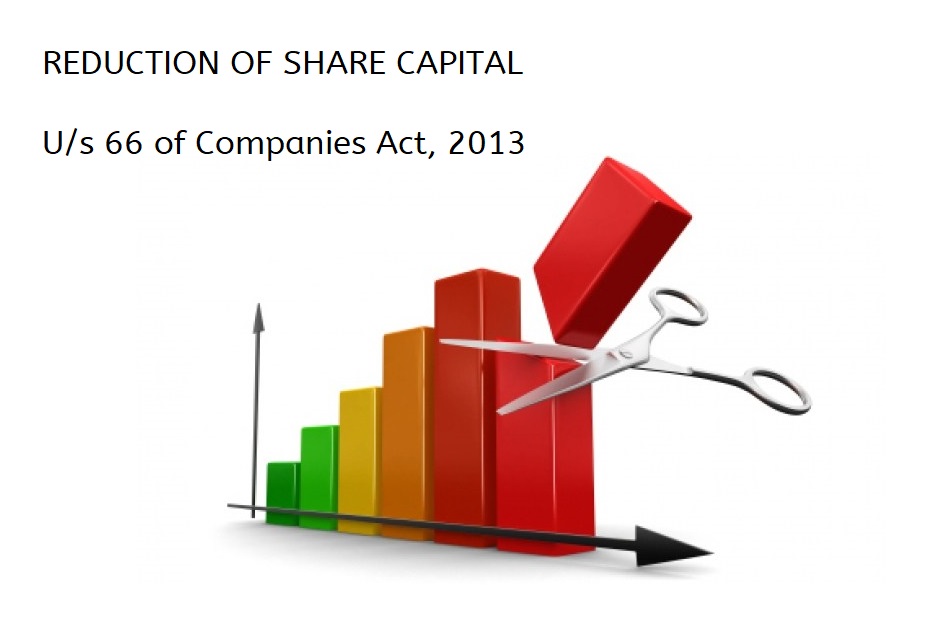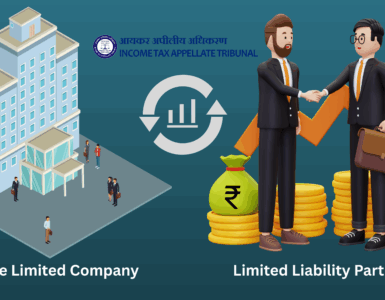Section 66 of the Companies Act, 2013 allows companies to reduce their share capital. The scheme of Reduction of share capital is undertaken by companies in the following manner:
- Company can extinguish or reduce its liability on its unpaid share capital.
- Company can extinguish or reduce its liability on its paid share capital by cancelling it which is lost or which is not representing its available assets.
- Company can even pay off to its shareholders excess paid-up capital received from them if that is not required to the Company.
Companies opt for reduction of their share capital either to create/ increase distributable reserves for them or to reduce their accumulated losses.
Sagar Soya Products Limited, a company listed on Bombay Stock Exchange has proposed reduction of its share capital under section 66 of the Act. The present equity paid up share capital of the Company is Rs. 5,85,16,890 divided into 5851689 equity shares of Rs. 10/- each. The Company is into the business of Soya Oil having accumulated losses upto Rs. 6,01,26,918.
The company is proposing for reduction of 95% of its paid-up equity share capital by which the Company could write off its accumulated loss i.e. debit balance of its Profit & Loss Account to the extent of Rs.5,55,91,045 in the existing paid-up equity share capital of Rs.5,85,16,890. Due to accumulated losses Company’s Financials are not showing actual values and there is no value addition to the shareholders. In this situation, only practical and economically efficient legal option available to the company was reduction of paid-up equity share capital.
The Company proposing to reduce its share capital at the first instance by reducing the per value of its share from Rs. 10/- to Rs. 0.5/-. Then it proposes to consolidate each 20 shares of Rs. 0.5/- to 1 equity share of Rs. 10/- to ultimately reduce the no. of paid-up shares.
In this process, the consolidation of share capital is required since paid up value per share was to be maintained as original i.e. Rs. 10/-
Table 1: Share Value Changes
| Sr. no | Particulars | No. of shares | Paid up value per share | Total Value |
| 1 | Before Reduction | 5851689 | 10 | 5,85,16,890 |
| 2 | After Reduction | 5851689 | 0.5 | 29,25,844 |
| 3 | After Consolidation | 292584 | 10 | 29,25,840* |
*The amount is rounded off to remove fraction in the remaining share capital. However, if required, promoters of the company will offer their holdings for the purpose of rounding off.
The Scheme provides for issue of new share certificates by the company to the shareholders holding shares in physical form consequent to this reduction. On and from the record date, the old(original) share certificates will be deemed to be cancelled. The company will issue new share certificates to the shareholders without considering whether the shareholder has surrendered old share certificate to the Company. However, the Company shall intimate on Record Date to the Stock Exchange about non-tradability of the original share certificates.
When a company proposes to reduce its paid-up share capital, it can be with or without reducing the company’s liability on its shares. In the proposed scheme of Sagar Soya Products Ltd., there is reduction in the paid-up share capital of the company only to wipe off accumulated losses. There is no cash payment by company to its shareholders for reducing their share capital.
It is specifically mentioned in the scheme that the scheme will not adversely affect creditors /Banks /Financial institutions because there is no cash outflow involved in the scheme.
Conclusion:
Many times, loss making companies’ financial statements are misrepresented by their accumulated losses. These accumulated losses of a company in the previous years can also disallow company to pay dividend to its shareholders, even if the company is now making profits. A company having accumulated losses can become a profitmaking entity either by making profits to compensate the losses or to undertake capital reduction measure, which is more practical and gives early results by strengthening Financial Statements as earning profits over the period is a long-term process. Thus, Reduction allows company to pay dividends to shareholders without waiting for operating profits.
In case of such Reduction of Share Capital implemented to wipe off accumulated losses, there is no reduction in outside liabilities of the company either in the books or in actual practice. On the contrary, after such Reduction, the financial statements display true financial health of the company and hence make easier for Banks and/or Financial Institutions to consider providing finance to the company.




